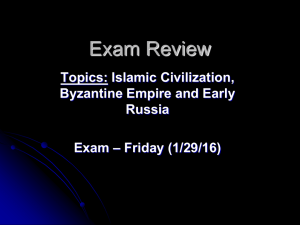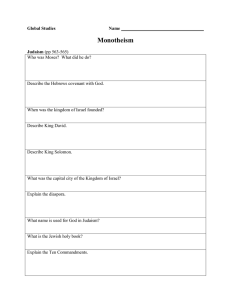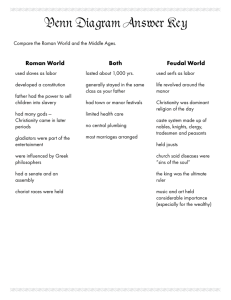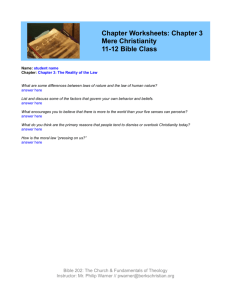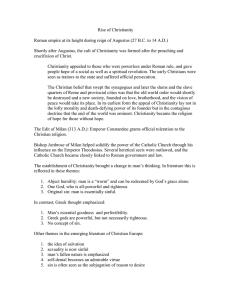Romans, Germans, and Muslims a. Arians b. Nestorians
advertisement
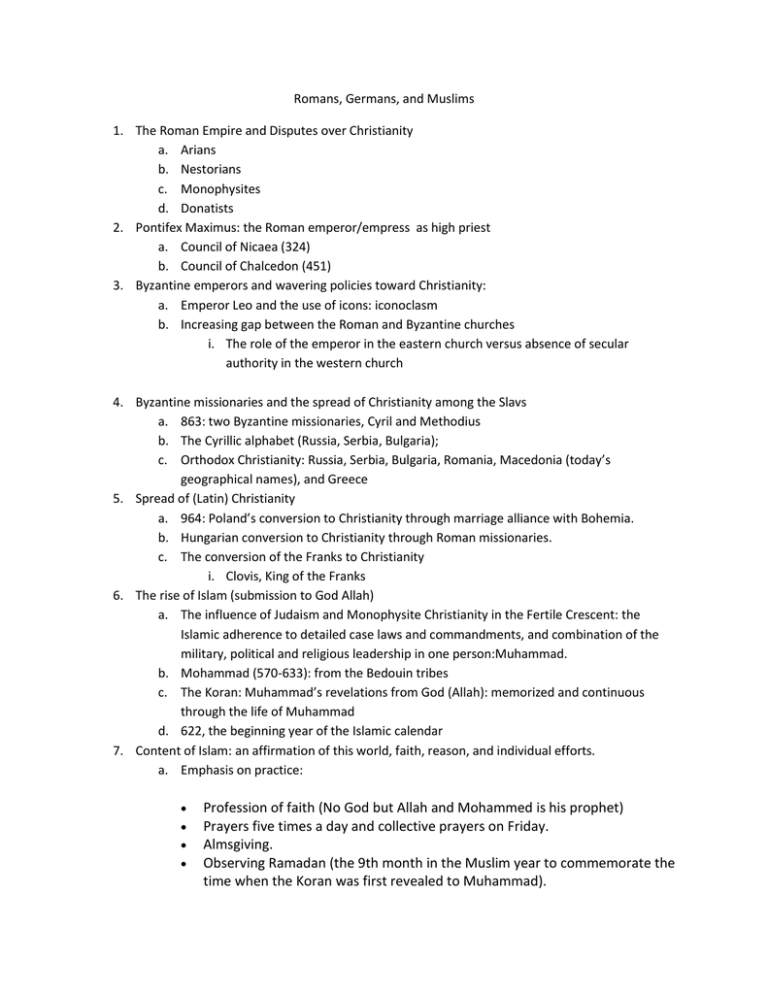
Romans, Germans, and Muslims 1. The Roman Empire and Disputes over Christianity a. Arians b. Nestorians c. Monophysites d. Donatists 2. Pontifex Maximus: the Roman emperor/empress as high priest a. Council of Nicaea (324) b. Council of Chalcedon (451) 3. Byzantine emperors and wavering policies toward Christianity: a. Emperor Leo and the use of icons: iconoclasm b. Increasing gap between the Roman and Byzantine churches i. The role of the emperor in the eastern church versus absence of secular authority in the western church 4. Byzantine missionaries and the spread of Christianity among the Slavs a. 863: two Byzantine missionaries, Cyril and Methodius b. The Cyrillic alphabet (Russia, Serbia, Bulgaria); c. Orthodox Christianity: Russia, Serbia, Bulgaria, Romania, Macedonia (today’s geographical names), and Greece 5. Spread of (Latin) Christianity a. 964: Poland’s conversion to Christianity through marriage alliance with Bohemia. b. Hungarian conversion to Christianity through Roman missionaries. c. The conversion of the Franks to Christianity i. Clovis, King of the Franks 6. The rise of Islam (submission to God Allah) a. The influence of Judaism and Monophysite Christianity in the Fertile Crescent: the Islamic adherence to detailed case laws and commandments, and combination of the military, political and religious leadership in one person:Muhammad. b. Mohammad (570-633): from the Bedouin tribes c. The Koran: Muhammad’s revelations from God (Allah): memorized and continuous through the life of Muhammad d. 622, the beginning year of the Islamic calendar 7. Content of Islam: an affirmation of this world, faith, reason, and individual efforts. a. Emphasis on practice: Profession of faith (No God but Allah and Mohammed is his prophet) Prayers five times a day and collective prayers on Friday. Almsgiving. Observing Ramadan (the 9th month in the Muslim year to commemorate the time when the Koran was first revealed to Muhammad). Pilgrimage to Mecca. 8. Islamic conquests 9. Islam after Muhammad: the caliphs and imams 10. The schism of the Sunnies, and Shiites.
